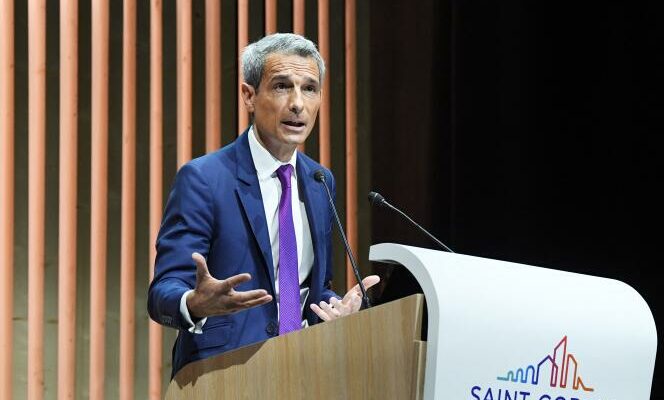Although we may be in promising long-term markets for low-carbon construction and energy renovation, we cannot escape the real estate crisis hitting Europe. Saint-Gobain suffered a setback in 2023. Thus, the world number one in construction materials announced, Thursday February 29, a drop in net profit and turnover, after a year 2022 marked by records: the first fell by 11% (2.67 billion euros), the second by 0.9% (47.94 billion), on a comparable basis.
This double-digit result is expected to be repeated in 2024, “ in a context where some of our markets are in decline”predicts Benoît Bazin, the general director of Saint-Gobain, who will become CEO at the end of the general meeting in June.
The crisis is not over, he warns, after a 5.9% decline in activity in Northern Europe and resistance in Southern European countries (-0.9%). He foresees a new construction market still ” difficult ” in 2024, while that of renovation should ” resist “. However, the market remains “structurally sound” due to needs, in both new and old buildings.
“Difficult macroeconomic environment”
Mr Bazin generally approves the government’s 2 billion euro plan to isolate education establishments and the increase ” very strong “ of the envelope of MaPrimeRénov’, even reduced by a billion and far from the “Marshall plan for energy renovation” which he defends.
Instead of 200,000 complete renovations initially planned, we will carry out “rather 140,000 or 150,000”, warned Christophe Béchu, the minister of ecological transition. “We have to be fair in the energy transition”explains Mr. Bazin to Worldpleading for its 4 billion to help low-income households living in “thermal sieves” as a priority.
“In a geopolitical and macroeconomic environment which remains difficult”he judges that his group demonstrated “the effectiveness and relevance of its strategic choices”particularly development in areas “of growth” (North and South America, South-East Asia), the creation of a hub “construction chemistry” to decarbonize concrete and cement, and restructuring by country (and no longer by profession) to better sell complete solutions for buildings, from Placoplâtre and glazing to sound insulation, and from facades to roofs.
The choice of sustainable construction remains, he affirms, the company’s raison d’être. “I see no contradiction between its competitiveness and a low carbon strategy”recalling the good stock market performance (+ 127% in five years). “We have a carbon roadmap and more than a thousand projects to reduce our emissions”, he summarizes. From the production of flat glass with hydrogen, plasterboard and 100% carbon-free acoustic panels, he illustrates, to a halving of water volumes in 2030 or optimization of road transport of its products reducing costs and carbon dioxide (CO2) thanks to big data.
You have 33.72% of this article left to read. The rest is reserved for subscribers.
